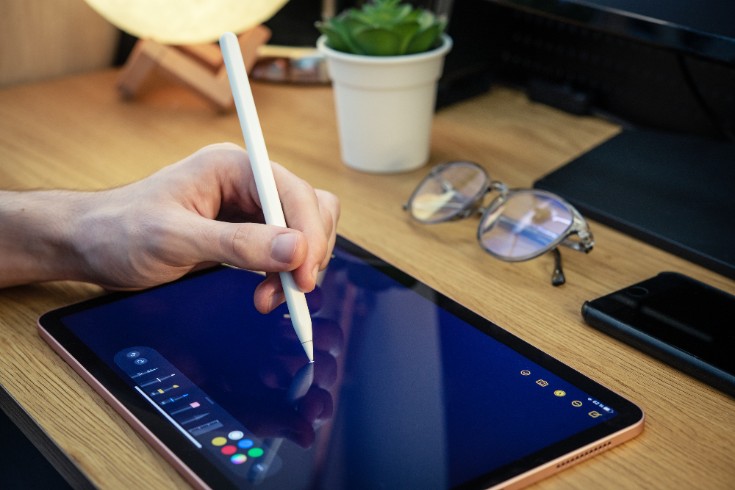Special Issues in Japanese Copyright Law: Protection of Applied Art, Characters, and Typefaces

The Japanese Copyright Law provides an extensive framework for protecting creative expressions. However, its scope of application raises complex issues in areas where art, commerce, and public information intersect. For companies involved in product design, brand building, and content creation, understanding these unique ‘gray areas’ under Japanese Copyright Law is essential to protect their intellectual property and avoid legal risks. This article will discuss several key themes where the usual concepts of copyright may not always apply. First, the issue of protecting ‘applied art,’ which balances practical functionality with aesthetic value. Second, the protection of ‘personalitys,’ which have a unique legal framework in Japan that differs from international common understanding. Third, the surprising issue of ‘typefaces’ (font designs), which are generally excluded from copyright protection. Lastly, the ‘works not subject to copyright protection’ that are intentionally excluded for the public benefit. Based on the provisions of Japanese Copyright Law and significant case law, this article aims to provide a professional analysis of these special issues and offer practical guidelines for corporate executives and legal professionals.
The Boundary Between Applied Art and Copyright Protection Under Japanese Law
Applied art refers to artistic works applied to practical items or embodied as practical items themselves. This creates a fundamental tension within Japanese intellectual property law, as these items may be protected by both Japanese copyright law and Japanese design law. Japanese design law aims to protect the aesthetic appearance of mass-produced industrial products, requiring registration for protection, with a shorter duration of protection compared to copyright. The intersection of these two laws has been central to the debate over the artistic nature of applied art.
Historically, Japanese courts have applied strict standards to the artistic nature of applied art, often referred to as the “equivalence to pure art theory.” According to this standard, for applied art to be protected as an “artistic work” under Article 2, Paragraph 1, Item 1 of the Japanese Copyright Law, it must possess a high degree of artistic creativity, enough to be appreciated aesthetically as a pure art piece, independent of its practical function. This high hurdle meant that most industrial designs were excluded from copyright protection.
However, this situation changed significantly with the Intellectual Property High Court’s 2015 ruling in the famous “TRIPP TRAPP case” concerning a children’s chair. The court decided that a uniformly high standard of creativity should not be applied to applied art. Instead, the general standard for determining the nature of a work, namely whether the creator’s “personality” is expressed, should be applied. Furthermore, the court clearly stated that the possibility of protection under Japanese design law does not provide a reasonable basis for applying stricter standards under Japanese copyright law. This is because the two laws serve different purposes. The ruling suggests that the traditional judicial role has shifted from being a “gatekeeper” strictly separating the realms of design law and copyright law to a more practical, case-by-case analysis. As a result, functional products are no longer automatically excluded from copyright protection.
The current interpretation often considers whether the aesthetic features can be conceptually “separated” from the functional aspects. If the design choices are purely functional, creativity is not recognized; however, if they reflect the creator’s aesthetic choices and personality beyond functional necessity, the work may be recognized as having artistic nature. This approach makes a dual protection strategy through both design registration and copyright a more realistic option for businesses, but it also introduces complexity. In the TRIPP TRAPP case, while the chair’s artistic nature was recognized, infringement was denied due to significant structural differences with the defendant’s product. This indicates that while it has become easier for artistic nature to be recognized, the scope of protection may be interpreted more narrowly, limited to specific creative expressions. Therefore, Japanese design law remains an important means to ensure broad protection for product designs.
Below is a summary of the differences between the systems of Japanese copyright law and Japanese design law regarding the protection of applied art.
| Japanese Copyright Law | Japanese Design Law | |
|---|---|---|
| Subject of Protection | Creative “expression” of ideas (creator’s personality) | Aesthetic appearance of industrial “articles” (shape, pattern, color) |
| Commencement of Rights | Automatically arises upon creation (formality-free) | Application, examination, and registration required at the Patent Office |
| Duration of Protection | Generally 70 years after the author’s death | 25 years from the date of application |
| Scope of Rights | Prohibits reproduction, etc., of specific creative expressions | Prohibits manufacturing and selling of identical and similar designs |
| Main Advantages | Long protection period, no registration costs, automatic international protection through treaties | Broad protection extending to similar designs |
| Main Disadvantages | Uncertain protection for functional items, potentially narrow scope of protection | Shorter protection period, time and cost for registration, novelty required |
The Legal Status of Characters and Merchandising Rights Under Japanese Copyright Law
In Japanese copyright law, the protection of personalitys is based on a unique legal rationale. The central legal principle is that a ‘personality’ itself is not a work of authorship. What the law protects is the specific and artistic ‘expression’ of that personality. For instance, a collection of personality traits, names, and conceptual images, such as ‘a brave mouse with large ears,’ is considered an abstract idea. Japanese copyright law protects the ‘expression’ of ideas, not the ideas themselves.
A foundational case on this issue is the Supreme Court’s 1997 (Heisei 9) decision in the ‘Popeye Necktie Incident.’ This case revolved around the unauthorized use of the Popeye personality in the sale of neckties. The Supreme Court made a clear distinction. First, it stated that the abstract concept of the ‘Popeye’ personality is not a work of authorship. Second, however, it determined that each specific drawing of Popeye in the original comic (each panel) is a ‘work of art’ protected by copyright.
This judgment also established the criteria for determining infringement. To prove infringement, it is not necessary for the defendant to have copied a specific identifiable drawing. Infringement occurs when the defendant’s depiction relies on the original work and allows the viewer to directly perceive the ‘essential features’ of the original expression. In other words, if someone looks at an infringing product and recognizes it as ‘that personality’ because it captures the unique visual personalityistics of the original drawing, then it constitutes copyright infringement.
This legal framework has a direct impact on the merchandising and licensing business of personalitys. When a company legally ‘licenses a personality,’ it is actually granting permission to replicate a portfolio of specific copyright-protected visual expressions related to that personality (for example, style guides or key art) and/or to create derivative works. This legal structure means that the intellectual property management of a personality is not about protecting a single abstract ‘personality right,’ but rather managing a portfolio consisting of numerous copyright-protected assets (specific drawings). Therefore, companies owning personalitys must carefully manage the specific visual expressions they wish to protect and license, utilizing style guides as an essential legal tool to define their scope.
Furthermore, the protection period for the basic design elements of a personality is tied to the publication date of the work in which the personality first appeared. In the Popeye case, the court considered the copyright duration of the initial serialized comic to determine whether its basic design was still within the protection period.
Is Typeface Design a Copyrighted Work Under Japanese Law?
In discussions about Japanese copyright law, one point that is often met with surprise is the fact that, as a general rule, the design of typefaces (fonts, font designs) is not protected by copyright.
The definitive conclusion on this issue was reached in the Supreme Court’s “Gona U case” judgment in 2000 (Heisei 12). The plaintiff argued that the defendant’s typeface was a reproduction of their own “Gona” font family. The Supreme Court denied copyright protection for policy reasons. Firstly, typefaces are essentially tools with a practical function for information transmission, and their design is subject to significant constraints. Secondly, granting copyright to typefaces would require permission for fundamental expressive activities such as publishing and information exchange, potentially contravening the purpose of copyright law, which is to promote cultural development. Thirdly, under Japan’s copyright system, where rights arise without registration, recognizing copyright for the countless typefaces with minor differences would complicate rights relations and lead to social confusion.
However, the Supreme Court did not completely deny the copyrightability of typefaces. For a typeface to be exceptionally protected, it must meet two extremely strict requirements: it must possess “distinctive features” that demonstrate originality compared to traditional typefaces, and it must have aesthetic personalityistics that allow it to be appreciated as an object of art in its own right. This standard is very high, effectively meaning that protection is only extended to highly artistic calligraphy-like typefaces that are closer to works of art than practical communication tools.
What is critically important here is the distinction between the “design” of a typeface (the visual appearance of the personalitys) and the font “program” (the software file used to render the typeface on a computer). While the design of the typeface itself is not protected, the font program is clearly protected as a “work of a program” under Article 10, Paragraph 1, Item 9 of the Japanese Copyright Law. In fact, there are legal precedents for injunctions and damages against unauthorized reproduction and distribution of font software. This legal dual structure draws a clear line between the use and reproduction of fonts. In other words, it is legal to imitate the visual design of a font (for example, by tracing) to create a new font, but it is illegal to copy the software file that generates that font. Therefore, the rights enforcement strategy of companies that produce and sell fonts should not focus on disputing design similarity but rather on proving infringement of program copyright through unauthorized copying of the software.
Works Not Subject to Copyright Protection Under Japanese Law
The Japanese Copyright Law intentionally excludes certain types of works from protection, even if they may contain elements of creativity. The underlying principle is to ensure that information essential to society remains freely accessible and usable without restrictions, serving the public interest.
Article 13 of the Japanese Copyright Law specifically enumerates the works that are not subject to copyright.
The first item is “the Constitution and other laws and regulations,” which includes laws, cabinet orders, ministerial ordinances, local ordinances, and international treaties. The second item refers to “notifications, instructions, circulars, and other similar documents issued by organs of the state or local public entities,” which are official administrative documents intended for public awareness. The third item includes “judgments, decisions, orders, and rulings of courts,” thereby making case law and judicial decisions public property. The fourth item pertains to “translations and compilations of the aforementioned documents produced by organs of the state or local public entities.” It is crucial to note that this exclusion applies only to “official” translations and compilations created by government agencies. Translations of Japanese laws made by private companies are protected as copyrighted works. This provision is an important compliance check for businesses utilizing translated legal documents, as they must always verify whether the translation is an official government publication or a copyrighted asset created by the private sector.
However, even documents issued by the government may fall outside Article 13 and thus be protected by copyright. For example, various “white papers,” research reports, and statistical data are included in this category. They are considered creative works intended for information provision rather than having legal effect.
Related to this concept is Article 10, Paragraph 2 of the Japanese Copyright Law, which states that “mere news of facts and current event reporting” do not constitute copyrighted works. This includes data on stock prices, weather forecasts, announcements of personnel changes, obituaries, and other simple descriptions of facts without creative elements. However, general news articles are protected as “literary works” because they involve the journalist’s creative judgment in the selection of subject matter, composition, and method of expression. These provisions establish a clear distinction within the legal system between “raw data (unprotected)” and “value-added products (protected).” This distinction forms the legal foundation for business models in the fields of information services and data analysis, which create value by adding expert commentary or unique analysis to raw data.
Summary
As outlined in this article, the issues surrounding applied art, personalitys, typefaces, and works not subject to copyright under Japanese Copyright Law involve a great deal of complexity and often lead to counterintuitive conclusions. The protection of applied art may hinge on the presence of the creator’s “individuality,” while personalitys are protected not as abstract concepts but through their concrete expressions. Furthermore, there is a dual structure where the design of typefaces is generally not protected, yet the software that renders them is protected as a work. Navigating these specialized areas requires deep expertise. Monolith Law Office boasts a wealth of experience in providing legal services on these themes to a multitude of clients, both domestic and international. Our firm includes several English-speaking attorneys with foreign qualifications, enabling us to offer comprehensive support for companies conducting international business to protect their intellectual property in the Japanese market and manage legal risks effectively.
Category: General Corporate





















